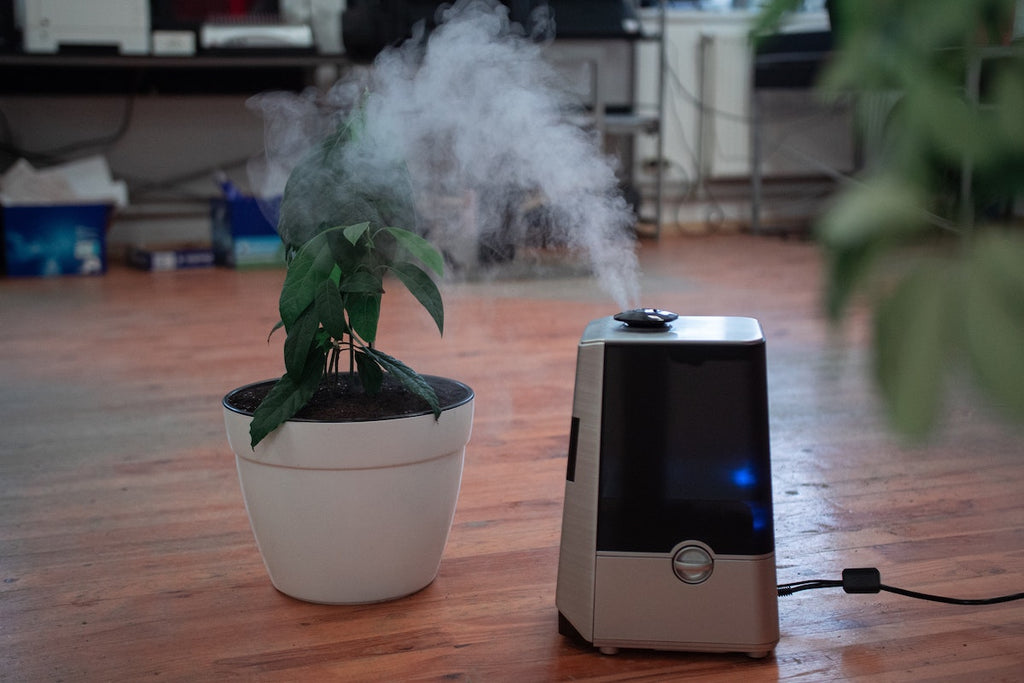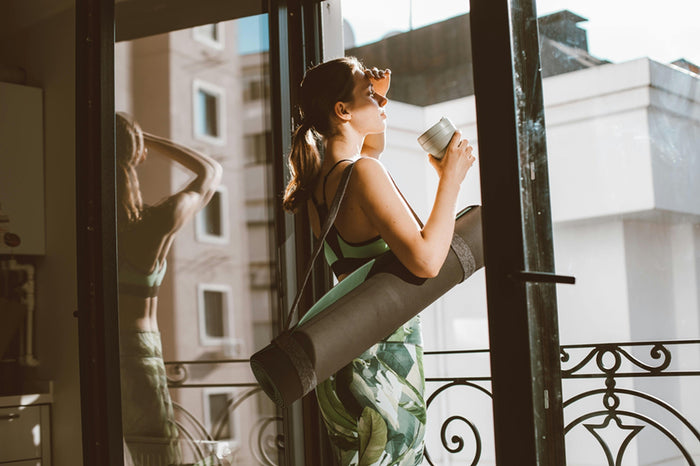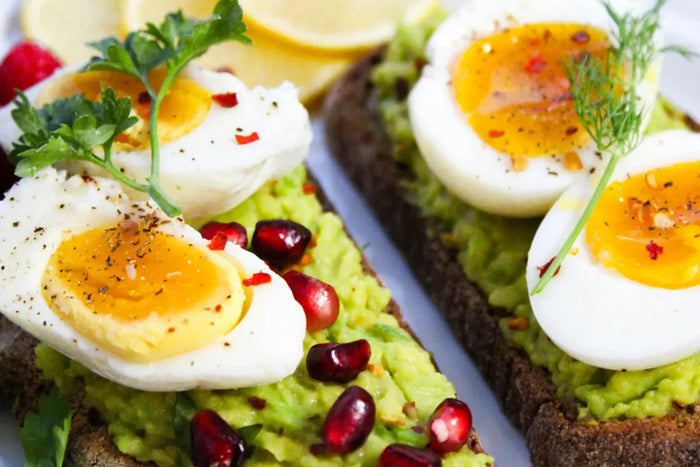As November rears its head, it’s probably time to accept that we’re well on our way into the depths of winter.
One of the effects of this change in season is that on our skin; in the winter, our skin is subject to the damage of the cold, snow, ice and rain, as well as the dryness of indoor heating. The result is that moisture is drawn out of the skin, leading to a number of other problems. Good that we've brought out our debut skincare product, The Glow Booster, to help you through... isn't it?
"The combination of moving from artificially heated environments into the cold air has a natural drying effect on the skin," says Amish Patel, an award-winning skin care expert and aesthetics practitioner. "When the air outside is dry and cold, the water in your skin is lost by evaporation more quickly. The result is that our skin is left feeling dry and tight."
But before we get into steps you can take to prevent these issues, let's dive into some of the science behind our skin.
The science behind our skin
The skin is the body’s largest organ and it acts as a protective barrier against the external environment. The outer layer is known as the stratum corneum (SC) and consists of a layer of cells surrounded by lipids (oils) like ceramides, cholesterol, and fatty acids.
Our skin produces less of these oils in the winter months, making it more susceptible to dryness, something that’s also known as winter xerosis (roughness, itching, scaling and flaking).
Additionally, if you wash your hands frequently, this dryness becomes worse as you wash the natural oils and good bacteria from your skin that keep it healthy.

Dry skin tends to be more of a problem in older people because as you age, the skin becomes less able to hold moisture and the number of oil-producing sebaceous glands decreases. However, in the winter there are steps that people of all ages should be taking to ensure maximum protection against the elements. So, here's how to master your dry skin winter routine...
Exfoliate and moisturise regularly
One of the most important steps that everyone should follow: exfoliate and moisturise. As we age, the process of cell regeneration slows down and so the body is slower to shed dead skin cells and produce new ones. As the old cells pile up, it can leave your skin looking dull, rough and dry, meaning you need to exfoliate. Exfoliation is the removal of dead skin cells on the skin’s surface, and in the winter these increase due to the cold weather drying out the skin on your face and body. If you don’t exfoliate, you can end up with excess oil, clogged pores, and even blemishes. There are a range of different types of exfoliators you can buy, including cleansing scrubs, exfoliating mitts, dry brushes, loofahs and pumice stones, and you should find out which skin type you have before choosing a product that best suits yours.
The key tip for your dry skin winter routine
After exfoliating, it’s important to moisturise, especially in the colder months, to prevent the skin from becoming chapped, dry and sore. There are different types of moisturiser for different skin types, so again choose one which suits yours. But thicker isn't always better in winter.
Taking care of skin in the winter

Tammy Richards, a skin and health specialist at Pure Optical, adds: "A common misstep that I frequently witness is people drenching the skin in thick moisturiser as winter approaches. Just because a cream is thick, doesn't mean it will combat dryness. Reach for products that contain hyaluronic acid, a substance that can hold 1000 times its weight in water and is great for retaining moisture in the skin."
Cut down on long, hot baths and showers
Winter skin dryness is a real problem that so many of us struggle with. We know it gets chilly in the winter and sometimes there’s nothing better than a long, hot bath or shower to take the feeling of impending frostbite away, but it’s possible to have too much of a good thing. Yes, really. Sorry.
An excess of hot water coming into contact with your skin can strip it of important oils, so where possible use cool or lukewarm water when washing your hands and face and save the hotter water for when you really feel like you need it. If you're someone who really can't forego your hot baths and showers though, try adding oils to your bath or use oil-based shower products to retain as much moisture as possible.

Invest in a humidifier
Taking care of skin in the winter can be hard, but investing in a humidifier could make this a little bit easier.
During the winter, the air becomes drier and lacks the moisture that keeps our skin soft and supple. So, to maximise the amount of water and moisture in the air around you, it could be worth investing in a humidifier for your home and placing it in a room that you spend a lot of time in, like your bedroom.
Richards says: "A humidifier that emits water vapour or steam will add moisture to the air and work to curb dry skin. You should consider one of these if you're working from home and are likely to sit with the heating on all day."
Besides keeping the skin moisturised, humidifiers can also help ease symptoms of a cold or other respiratory conditions. However, it’s important to keep your humidifier clean, because if not, they can breed mold or bacteria and transmit this into the air around you.

Wear SPF (yes, even in winter)
This is a rule that applies throughout the entire year and just because it’s not hot or sunny outside in the winter doesn’t mean you can skip on the SPF. The sun is powerful all year round, even through cloud, so it’s key to use at least an SPF 30+ on exposed skin before going outside. Without it, your skin will be more exposed to the sun’s UV rays which dry out the skin, leading to problems such as sunburn and signs of early ageing. But beyond helping keep the skin moisturised, SPFs have a number of other benefits including keeping your complexion even, reducing signs of premature ageing, and even reducing the risk of cancer.
Put the right foods in your body
Besides paying attention to what’s in the air and environment around you, it’s also important to take note of what you’re putting inside your body when it comes to your skin this winter. There’s a direct connection between your gut and your skin health, so experts recommend increasing your daily intake of healthy fats to help with dry skin. Foods you can incorporate into your diet for this purpose include things like walnuts, olive oil, and avocados.
You can also take advantage of ingestible skin supplements like The Glow Booster - which provide you with skin boosting ingredients from the inside out to make sure you're getting that glow on point from all angles.
In the meantime, you may want to cut down on things like alcohol and caffeine; as diuretics, these will cause dehydration. "Drinking caffeinated tea, coffee and alcohol can all dehydrate the body and this will have an impact on your skin, so keep drinking water," Patel says. "If you can't bear drinking cold drinks in the winter, try hot water with decaffeinated herbal tea bags instead."

By combining these steps you'll be on your way to glowing winter skin in no time. Tried any of these tips? Let us know in the comments below how you got on, we’d love to hear from you!

















